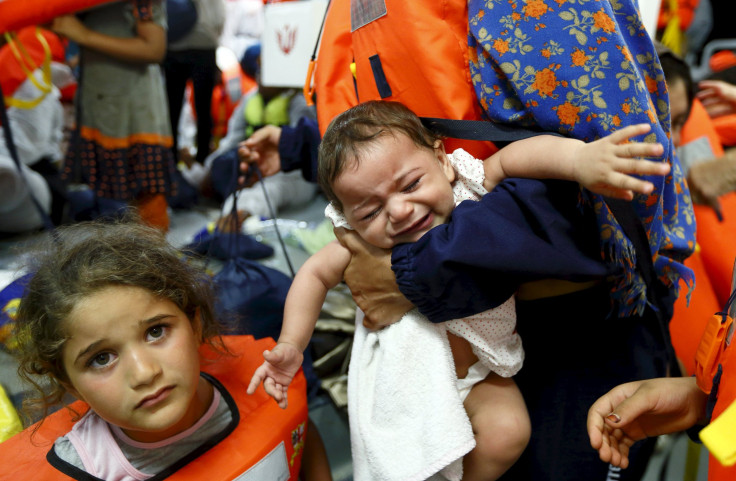More Than 200 Feared Dead In Sinking Of Migrant Boat

Hopes faded of finding more survivors on Thursday from a shipwreck in which 200 migrants are feared drowned, as rescue ships were called to the aid of more migrant boats in the same area of the Mediterranean.
"We are witnessing a genocide caused by European selfishness," said Palermo mayor Leoluca Orlando as the Irish navy ship LE Niamh docked in the port carrying some 370 survivors of Wednesday's disaster and 25 corpses, including three children.
Orlando, speaking on Italian television as hearses arrived to take the bodies away, called on European leaders to do more to prevent such disasters and to allow more refugees to re-settle in their countries.
After the survivors disembarked, some were escorted back on board to see if they could identify the dead children.
Police said they had detained five men suspected of having piloted the boat that overturned on Wednesday and of having had a role in trafficking the migrants.
Vessels from the Italian and Irish navies and humanitarian agency Medecins Sans Frontieres (MSF) saved about 400 people from the fishing boat, thought to have been carrying up to 600 people, mostly Syrians fleeing their country's civil war.
They found no more survivors after scouring the waters overnight. Italian vessels continued to search the area on Thursday, a coastguard spokesman said.
Seas were very calm on Thursday, perfect conditions to attempt the sea crossing, said a Reuters photographer aboard the privately funded Phoenix, a vessel run by MSF and the Migrant Offshore Aid Station.
The Phoenix was responding to a distress call for a boat carrying about 500 people, he said. The coastguard picked up 381 on Thursday morning, while an Italy navy ship took 101 from a large rubber boat, and the MSF vessel Argos rescued 87, according to their Twitter accounts.
Wednesday's tragedy occurred when the boat flipped over as the LE Niamh approached, probably because desperate passengers surged to one side as they spotted the ship.
"What happened here was because the boat was so overloaded, and the conditions were such that the boat started taking on water and it listed to one side, capsized and sank, all in the space of two minutes," Irish Defence Minister Simon Coveney said on Irish state radio RTE on Thursday.
The Irish ship is part of the European Union Triton mission, which was expanded after up to 800 migrants drowned in a shipwreck in April.
DEADLY BORDER AREA
The Mediterranean Sea is the world's most deadly border area for migrants. More than 2,000 migrants and refugees have died so far this year trying to reach Europe by boat, compared with 3,279 during the whole of last year, the International Organization for Migration said on Tuesday.
People-smugglers, mostly based in Libya and charging thousands of dollars for passage, have sent more than 90,000 migrants by sea to Italy so far this year, the UN refugee agency says. Italy took in 170,000 in 2014.
This summer's mass arrivals in both Italy and Greece show the crisis is worsening. Immigrants fleeing violence and poverty at home continue to pour in from Africa and the Middle East.
Many of the newcomers look to move swiftly to wealthier northern Europe, including to Britain from Calais, France.
In April, a 20-meter (66-foot) vessel capsized as it approached a merchant ship that had come to its assistance, and up to 900 people were killed. It was the deadliest shipwreck in the Mediterranean for decades and a symbol of Europe's long-running migrant crisis.
© Copyright IBTimes 2024. All rights reserved.




















